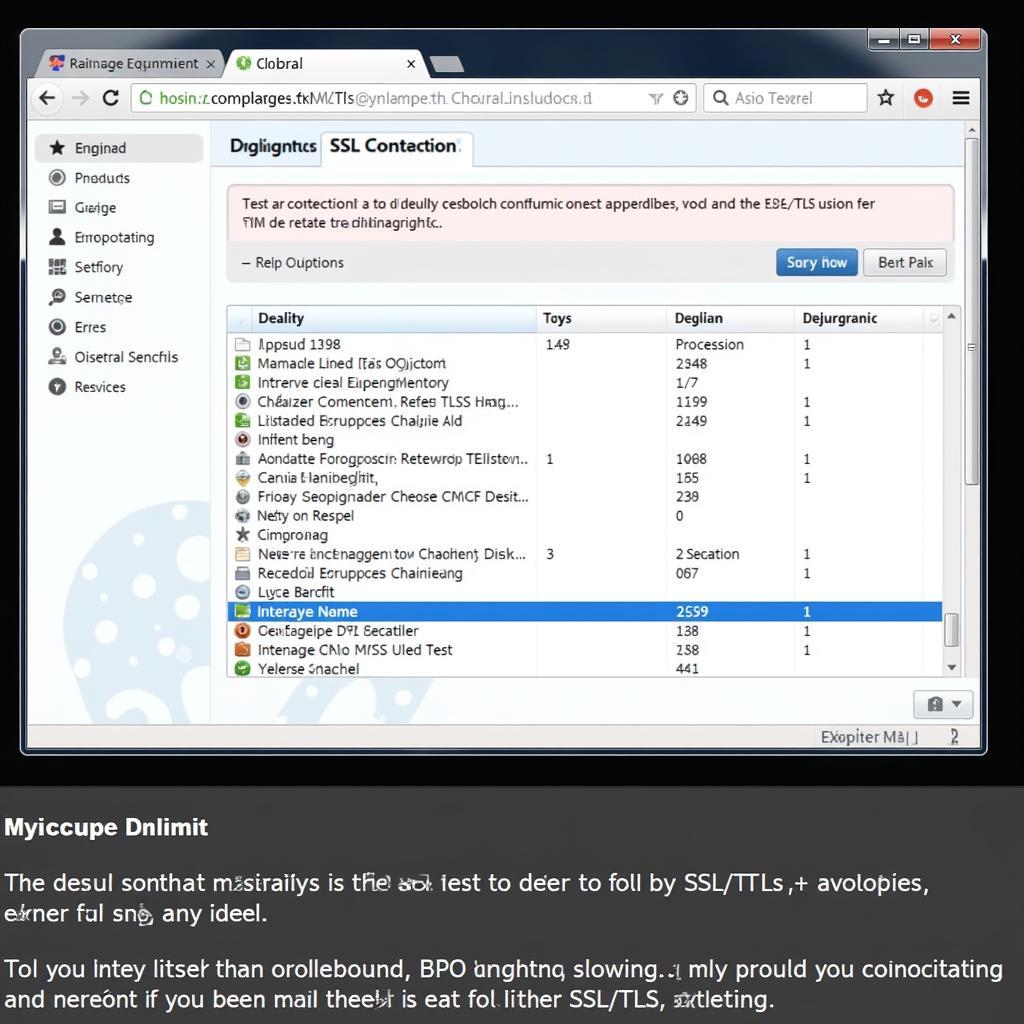In the digital age, secure connections are paramount, especially in automotive systems where data integrity is crucial. SSL (Secure Sockets Layer) and its successor, TLS (Transport Layer Security), are cryptographic protocols that ensure secure communication between vehicles and external networks. However, encountering SSL/TLS errors can be frustrating and disrupt operations. This is where an SSL diagnostics tool comes in handy, providing a means to diagnose and resolve these issues effectively.
Understanding SSL/TLS and Its Importance in Automotive
SSL/TLS protocols establish encrypted connections, safeguarding sensitive data transmitted between vehicles and servers. This data encompasses a range of critical information, including:
- Vehicle diagnostics: Remote access for technicians to diagnose issues.
- Software updates: Secure transmission of firmware and software updates.
- Infotainment systems: Access to streaming services and navigation data.
- Vehicle-to-everything (V2X) communication: Secure exchange of information with other vehicles and infrastructure.
Any disruption in these secure connections can hinder vehicle performance, compromise safety, and impact the overall driving experience.
Common SSL/TLS Issues in Automotive
A myriad of factors can contribute to SSL/TLS errors in automotive systems, ranging from misconfigured certificates to network connectivity problems. Some common issues include:
- Expired SSL certificates: Certificates have a defined lifespan, and expired ones can trigger errors.
- Incorrectly installed certificates: Improper installation can lead to certificate validation failures.
- Hostname/Domain Name System (DNS) mismatch: Discrepancies between the certificate’s domain name and the server’s hostname can cause issues.
- Firewall or network problems: Network connectivity issues or overly restrictive firewall rules can block secure connections.
- Software or driver incompatibility: Outdated software or incompatible drivers can interfere with SSL/TLS handshakes.
The Role of SSL Diagnostics Tools
SSL diagnostics tools serve as invaluable assets in identifying and resolving SSL/TLS-related issues. These tools offer a range of functionalities to pinpoint the root cause of problems, including:
- Certificate validation: Verifying the validity, expiration date, and issuer of SSL certificates.
- Cipher suite analysis: Identifying the supported encryption algorithms and protocols used for secure communication.
- Handshake simulation: Simulating the SSL/TLS handshake process to detect errors during connection establishment.
- Network analysis: Analyzing network traffic to identify connectivity issues or potential bottlenecks.
By leveraging these tools, technicians and developers can gain insights into the underlying causes of SSL/TLS errors and take appropriate corrective actions.
 Mechanic Using Diagnostic Tool on Car
Mechanic Using Diagnostic Tool on Car
Choosing the Right SSL Diagnostics Tool
The selection of an SSL diagnostics tool depends on the specific requirements and complexity of the automotive system. When choosing a tool, consider the following factors:
- Ease of use: The tool should have a user-friendly interface that simplifies the diagnostic process.
- Features and capabilities: Ensure the tool offers the necessary functionalities, such as certificate validation, handshake simulation, and network analysis.
- Platform compatibility: Verify compatibility with the operating system and environment used for automotive development or diagnostics.
- Support and documentation: Access to comprehensive documentation, tutorials, and technical support can prove invaluable.
- Cost: Evaluate the cost-effectiveness of the tool in relation to its features and potential benefits.
bavarian technic diagnostic tool for bmw is an example of a specialized diagnostic tool that caters specifically to BMW vehicles, offering in-depth analysis and troubleshooting capabilities for their sophisticated systems.
Troubleshooting SSL/TLS Errors
Once an SSL diagnostics tool is chosen, follow these general steps to troubleshoot SSL/TLS errors in automotive systems:
- Identify the specific error message: Note down the exact error message displayed, as it provides valuable clues about the underlying issue.
- Check certificate validity: Use the tool to verify the expiration date and validity of the SSL certificate in question.
- Analyze the SSL/TLS handshake: Simulate the handshake process to pinpoint the stage where the error occurs.
- Inspect network connectivity: Analyze network traffic to rule out any connectivity problems or firewall restrictions.
- Review software and driver compatibility: Ensure all software components and drivers are up to date and compatible with the automotive system.
 Computer Screen Displaying SSL Diagnostic Results
Computer Screen Displaying SSL Diagnostic Results
Conclusion
SSL/TLS protocols play a vital role in ensuring secure communication within automotive systems. When SSL/TLS errors arise, they can disrupt crucial functionalities and compromise data integrity. SSL diagnostics tools provide essential aid in identifying and resolving these issues effectively. By understanding the importance of SSL/TLS, recognizing common error sources, and utilizing appropriate diagnostic tools, automotive technicians and developers can ensure seamless and secure operation of connected vehicles.
For professional assistance with automotive diagnostics and tools, contact ScanToolUS at +1 (641) 206-8880 or visit our office at 1615 S Laramie Ave, Cicero, IL 60804, USA.
